Or Whisk Away.
I love whisks. Of every kind. I have a collection too.
I love to collect. Ideas, thoughts, beautiful things. Functional things too. Things with form and beauty.
I bookmark a thousand things a day. Write a thousand collections in my notebook. Make a million plans.
I’m happy.
My current collections are varied.
Everything from eggcups to fabric, jam jars with gingham lids. Bottles, plates. Travels. Discoveries. Friendships. Rolling pins. Bowls, Paper, stories.
And whisks.
My whisks and I are extremely friendly.
I use one almost every day, from whipping up pancake and waffle batters, to sauces, and bread dough. They are an important part of my kitchen prowess and I respect them totally!
Whisks are practical kitchen utensils. All about form – excellent design, and function.
They are commonly made of metal, wood and these days, silicone.
A whisk is a cooking utensil used in food preparation to blend ingredients smooth, or to incorporate air into a mixture, in a process known as whisking or whipping. Most whisks consist of a long, narrow handle with a series of wire loops joined at the end. The wires are usually metal, but some are plastic for use with nonstick cookware. Whisks are also made from bamboo.
To think that the whisk of the day is based on precursors of twig bundles is not hard, if you consider some, like the Nigerian Ijabe and the Japanese Chasen, both featured below.
Bundles of twigs, typically willow, have long been used as whisks; often the wood used would lend a certain fragrance to the dish. An 18th century Shaker recipe calls to “Cut a handful of peach twigs which are filled with sap at this season of the year. Clip the ends and bruise them and beat the cake batter with them. This will impart a delicate peach flavor to the cake, Wikipedia
So here is a brief introduction to most…not all of my whisk collection.
Loved for what they teach me about countries, cultures and cuisines. Loved for how varied their forms and functions are.
Nigerian ‘Ewedu’ Whisk
This is a whisk popular in the west of Nigeria, amongst the Yorubas. Commonly called ‘Ijabe‘, it is used to chop up, whisk and blend a variety of jute leaves called ‘Ewedu’ and is referred to as Ewedu Broom.
The older versions of this whisk were made from short bunches of broomsticks, with hard bristles.
It serves three functions in the making of Ewedu soup. It allows the cooked, softened leaves to be chopped, mashed and whisked, creating a sauce that is almost pureed and has released the mucilaginous properties of the Ewedu leaves, like Okro.
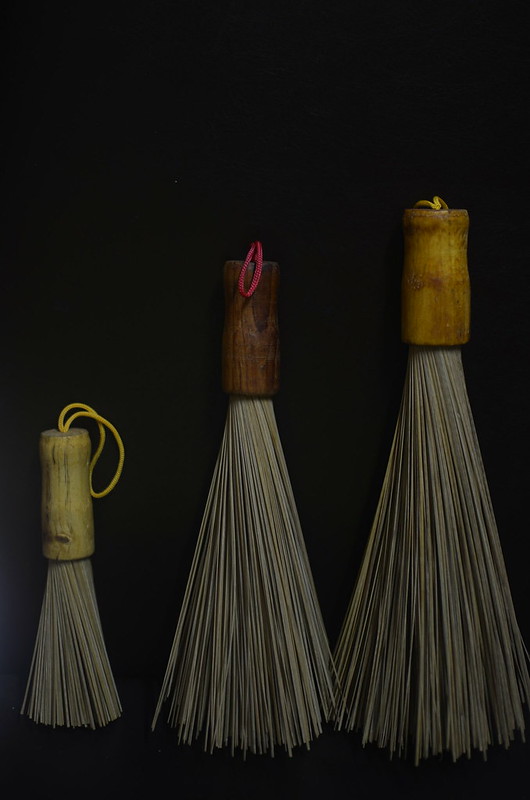
When I found them at a shop, I was ecstatic. And bought 3 of each size! They cost next to nothing but will now go into my collection of cooking utensils and things to ‘gift’!
These newer versions have firm handles, with really strong bristles, and they look pretty too.
Typically in Nigeria, most of the brooms are made from the main veins of palm-tree leaves.
And are available to buy in Nigeria and Abroad (for the ‘classic’ version).
Japanese Matcha Whisk
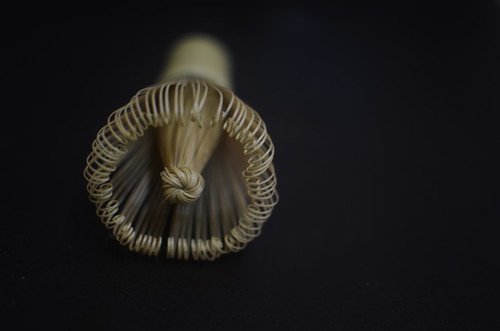 Watch Eric Gower, The Breakaway Cook make it in this video.
Watch Eric Gower, The Breakaway Cook make it in this video.
Danish Dough Whisk
The secret to its effectiveness is that the hardened stainless-steel loops of different diameters are in three separate planes, one behind the other. The design originated with the Danes long ago, but now the whisk is made only in Poland. Asian look-alikes on the market do not perform well at all.
It would take a full catalog page to cover all the alternative uses of the whisks, which range from preparing bread dough to cookie and muffin batter, pie filling, and pastry. If you search “Danish dough whisk” on the web, you can find numerous other uses and many enthusiastic reviews.
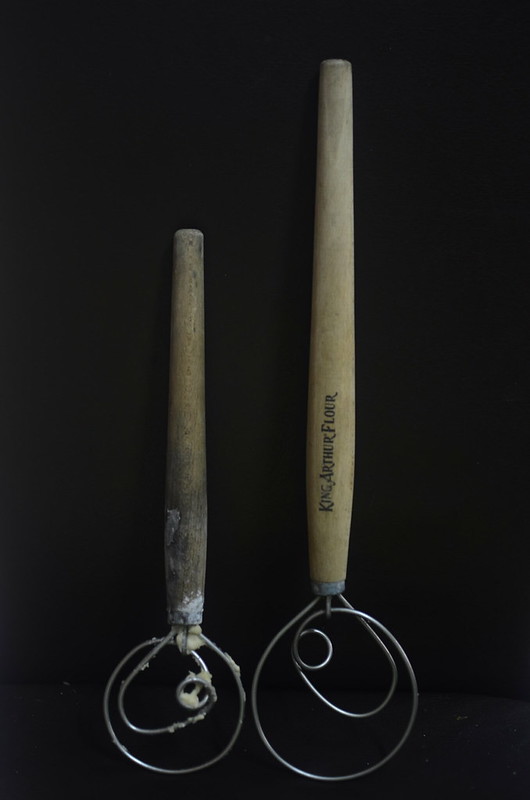
This Danish dough whisk, or bread whisk, is used to whip up bread dough without getting any on your hands, and without having to get dough bits under your nails scraping at the sides.
Because it has only about four percent of the surface area of a regular spoon, it allows you to get air into the dough, making it lighter and fluffier, while evenly mixing all the ingredients and keeping your hands clean. It’s also made of unyielding metal, so it won’t bend when you pull it through a thick dough. Basically, it’s an alternative to everything you have in your drawer that didn’t work perfectly on bread dough.
It seems that this oddly-looped whisk has its roots in Denmark, hence the “Danish” modifier, but is now only manufactured in Poland. You can get your own on specialty cooking websites.
Mexican Molinillo
A gift from a wonderful Mexican friend, I’ve used this whisk to make many a thing, from Mexican hot chocolate, light and frothy to more Mexican hot chocolate, perfect to serve with macarons.
A Molinillo is a traditional Mexican turned wood whisk, also used in Colombia.
Its use is principally for the preparation of hot beverages such as hot chocolate, atole and champurrado.
The molinillo is held between the palms and rotated by rubbing the palms together; this rotation creates the froth in the drink.This process is the subject of a popular children’s nursery rhyme in Mexico.
‘Teardrop’ Balloon Whisk
Gourmet says it well ‘This is the whisk that Julia Child made famous int he sixties, and it’s the one to use for incorporating air into bowls of egg whites or cream— think meringues, soufflés, cake batters, and whipped creams.Use it, too, when a recipe calls for mixing together dry ingredients, like flour, salt, and baking powder, baking soda: It distributes and helps break up any large bits, often eliminating the need for sifting.The balloon should have at least eight sturdy, flexible wires.
Mini ‘Teardrop’ Balloon Whisk
A mini whisk with long handle stirs up your favorite cocktail in the shaker or glass. Bar whisk is a must for nogs, flips and crème de menthe drinks, as well as vinaigrettes or sauces; Crate & Barrel
Round Balloon Whisk
Gravy/Sauce Whisk
Vintage Rotary Egg Beater/Whisk
Hand-operated rotary egg beaters were invented just before 1860, but at that time it wasn’t yet clear what the best design for the job would be. Different inventors had different ideas for labour-saving ways of whisking eggs.
The first beaters with rotating parts were probably an American design patented in 1856 and, in England, Griffiths’ Whisk patented 1857 . Home Things Past
I have used mine a few times……for fun. With the kids.
Never seriously but the day is coming!!!!
Egg Whisk
Yet another vintage find.
Also called a spring wire whisk.
This whisk graces the walls of my ‘shrine’ as my younger sister calls my ‘hallowed’ kitchen space.
Its never been used, but is known for its qualities in beating eggs.
It reminds me of a beehive 🙂
As I grabbed the egg whisk, I mused that I can’t even remember how long I’ve had it. I’ve been married 27 years and I must acquired it even before that. My mom probably passed it along to me to equip my college apartment. All of my other whisks have been replaced many times over, but this one, that one that bounces and boings, is still going strong; Come Weary Moms
Egg Whisk
Yet another vintage whisk. Also gracing my kitchen walls.
Also never used.
Also called Wire Coil. Egg Whisk Beater.
Can be brought to good use….in all sorts of ways.
Will be brought to good use. Soon.
So there you have it, my collection of all things whisks and beaters, sans the electric ones.
I still have a few I’d love to acquire, like this egg separator whisk and this flat, almost-fish slice type whisk.
Till then, I’ll enjoy my Whisks Allsorts.
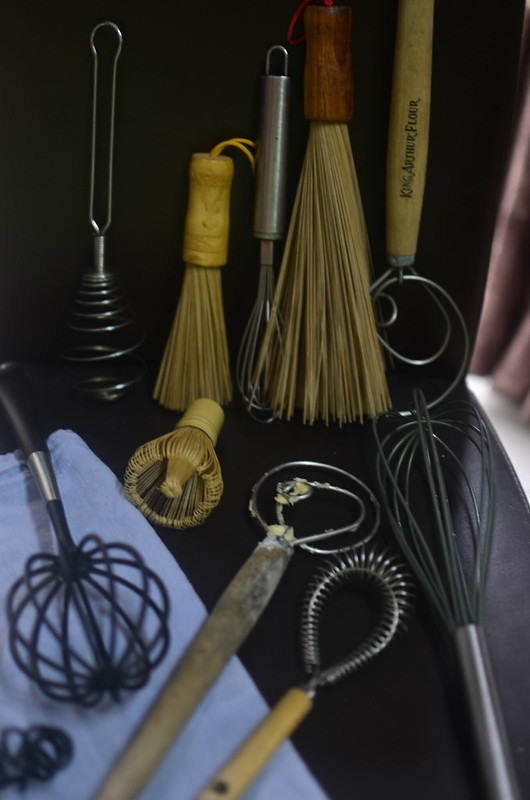
Words of Wisdom on Whisks, from Cookentertain.com:
Perhaps the next most important factor behind shape, when it comes to whisking, is speed – the speed at which you whisk the ingredients.
Using a whisk at a slow speed produces a dense, smooth finished product. That’s because you are not incorporating as much air into the ingredients. Slow is how you want to approach sauces. Slow speed for sauces!
Using a whisk at a fast speed produces a lighter, airier finished product because you are able to get a lot of air into liquids. Fast is how you want to whip egg whites for a soufflé or cream for whipped cream – getting more air into the liquids gives you a puffy soufflé or a whipped cream that’s as fluffy as clouds. Fast for light & airy bakes!
Some Whisk Resources
- Your guide to selecting & buying whisks, from handles to cleaning: Gadget -A-G0-G0 on feaststl.com
- Excellent 7+ minute Cooking Video on whisks and how to use them by Peter Hertzmann, Reluctant Gourmet
- Changed from flat to balloon in an instant? See Oh Gizmo’s find!
- A sauce whisk, in detail, Rosle
So, are you a Whisk Collector?
If you have any whisks not featured here, regular or weird and wonderful, send me a photo and a note and I’ll do a round-up………..to share the wonderful world of handheld, non-electrical ‘whipping’, ‘whisking’ and ‘beating’ utensils!
Enjoy what’s left of this weekend!
Love X X X

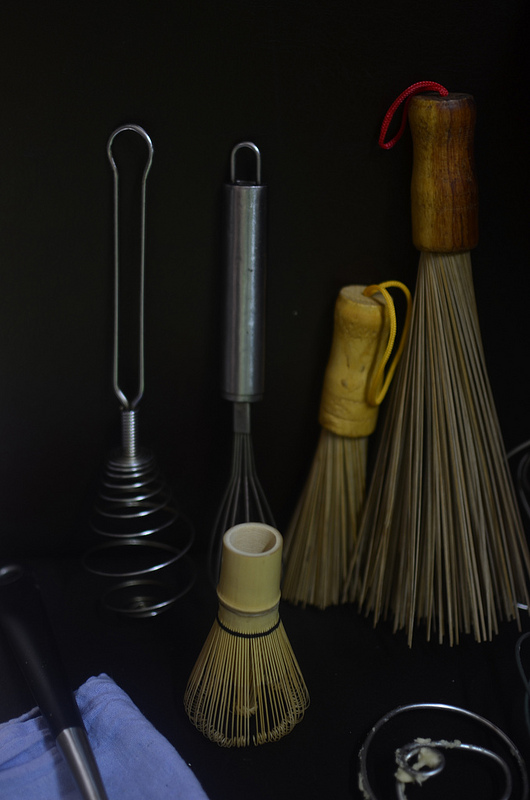

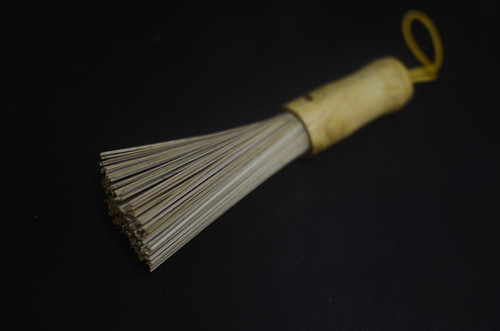











Leave a Reply